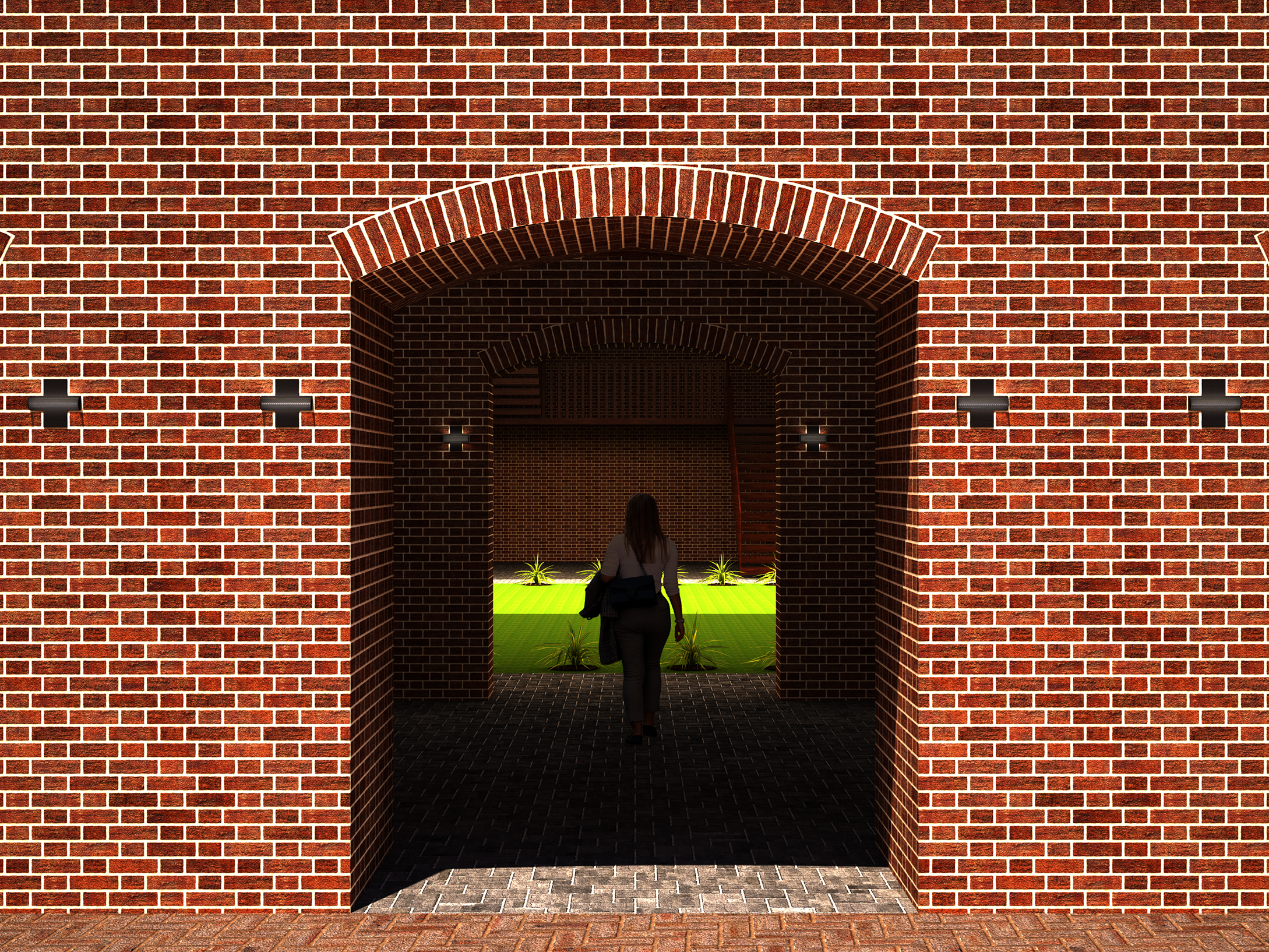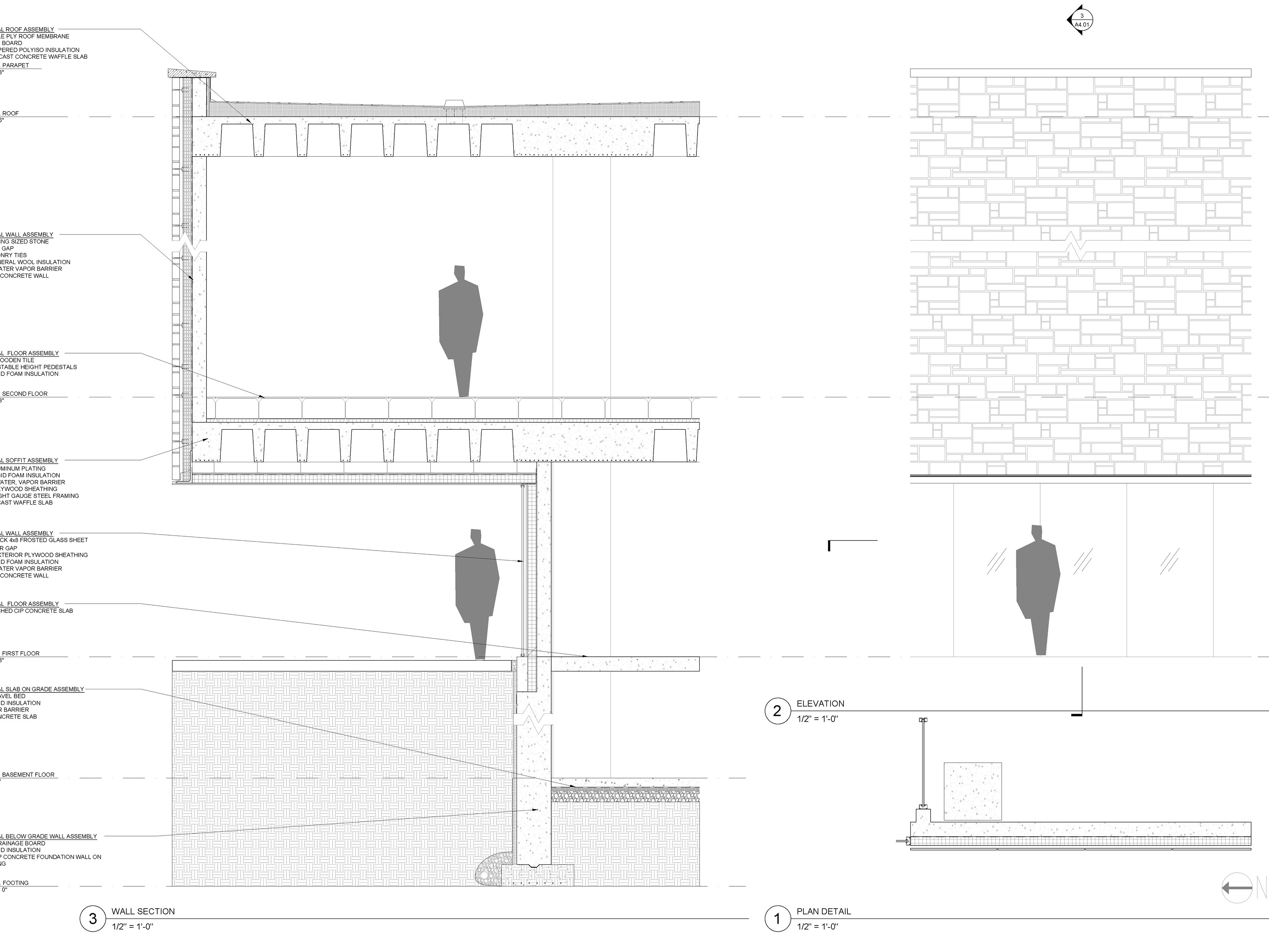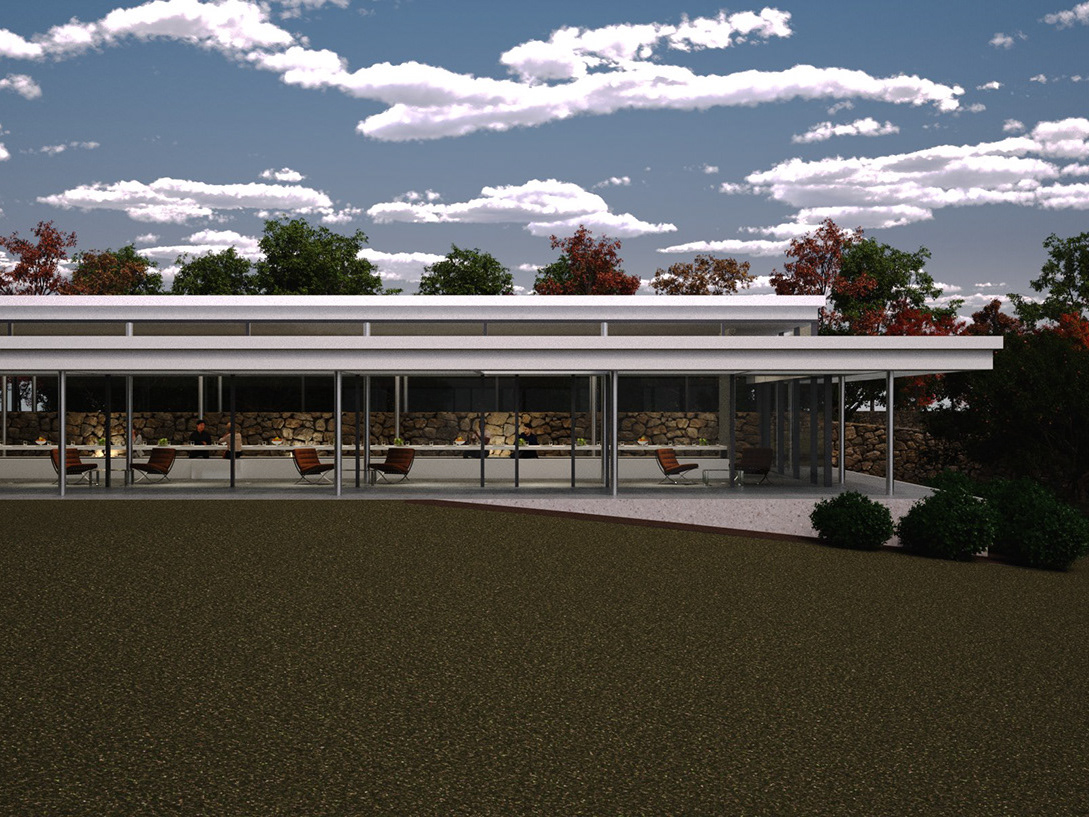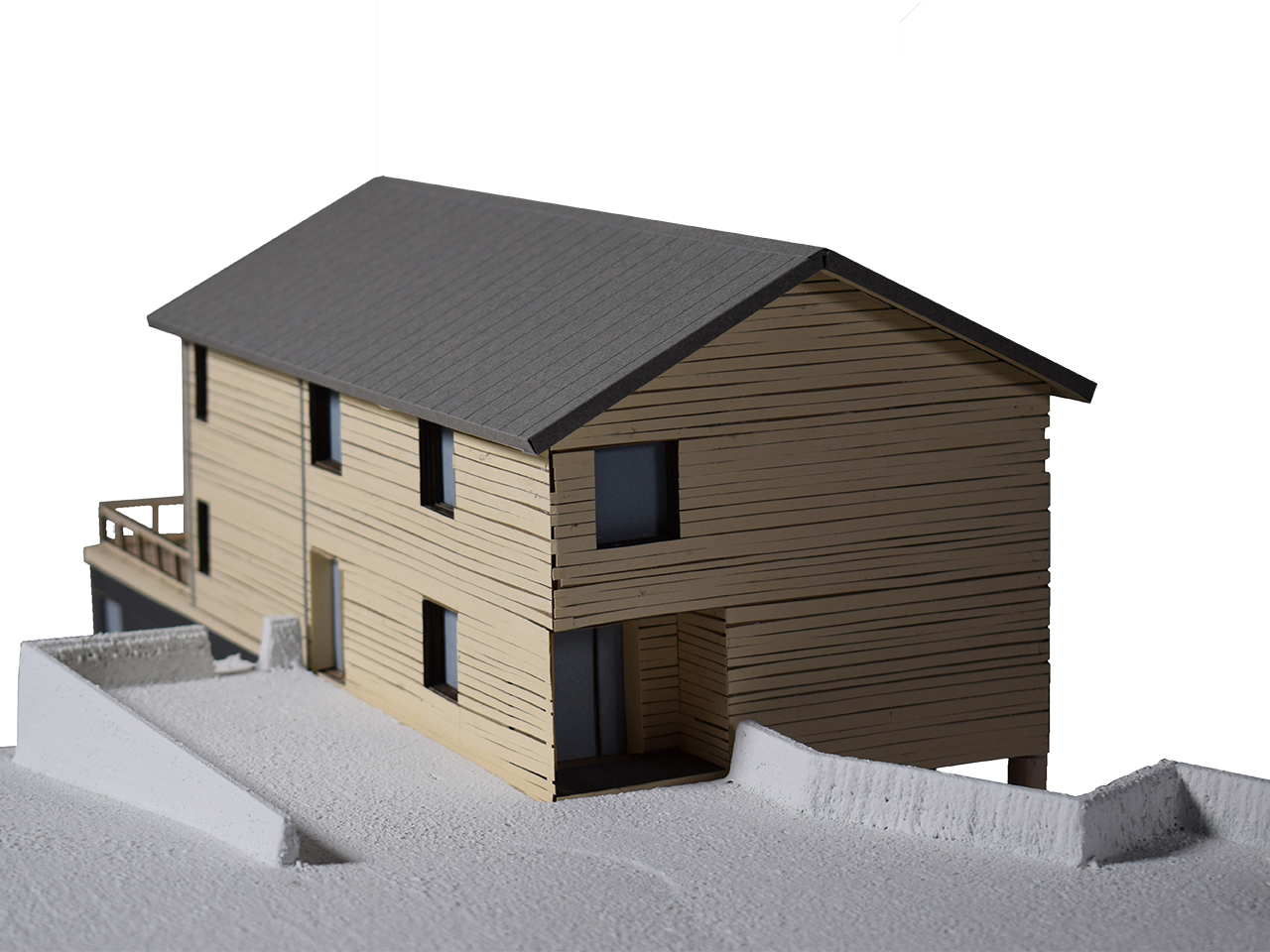Conceptually the Partridge Table began as an exploration into the creation of curves through only the use of straight lines. The design was developed using only basic drafting. The original idea behind the table came from middle school math class. Mrs. Partridge would often assign graphing exercises to form extraordinary curved illusions. It was from these exercises that I was ultimately inspired and motivated to find a means through which the concept could be presented in three dimensional space.
The creation of the parabolic curve, seen in elevation, is the result of the optical illusion of overlapping 1”x 1” pieces of hard maple. Fourteen legs connected into two sets of seven allow for the outline of the parabola to exist in the negative space below the table. The legs are mirrored along the central axis which works to present a sense of motion to the assembly. This decision was made following numerous iterations that looked into the scale of the table itself along with how many divisions would make up the curve. During this exploration numerous other possibilities emerged from small side tables to full size dining tables. Ultimately a 29 inch measurement was chosen for the perimeter dimensions of the table to best serve as table that could be used to seat two.
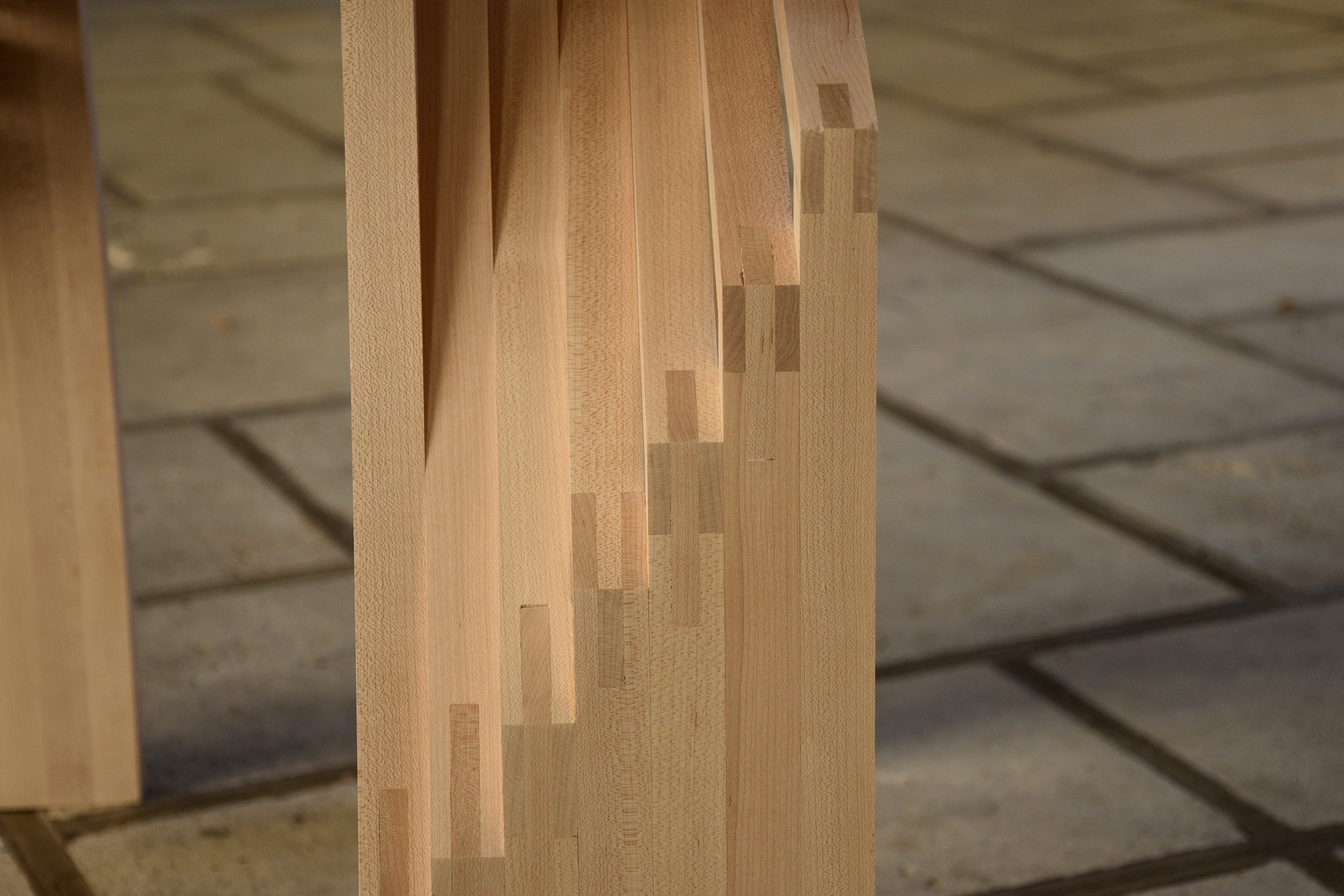
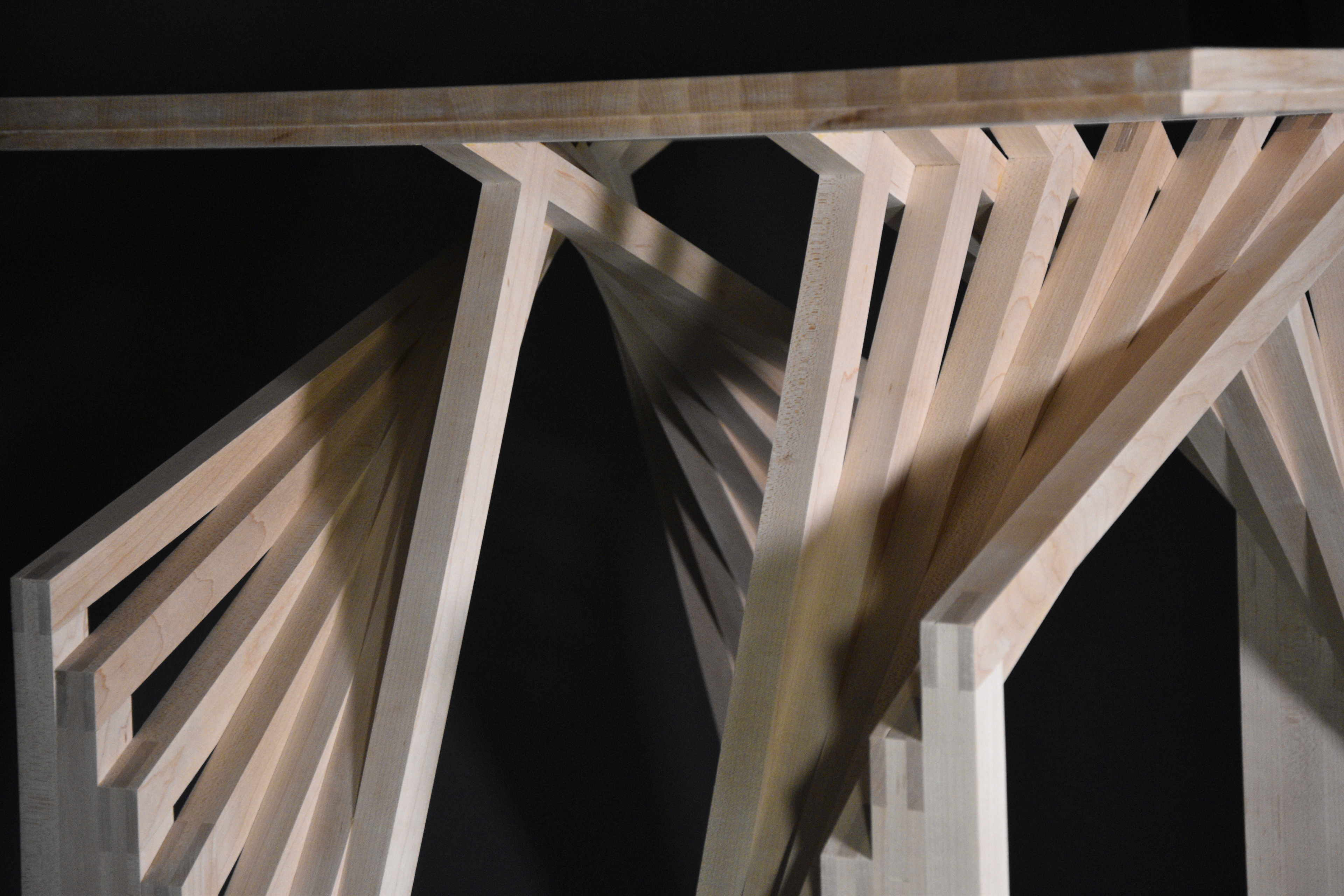
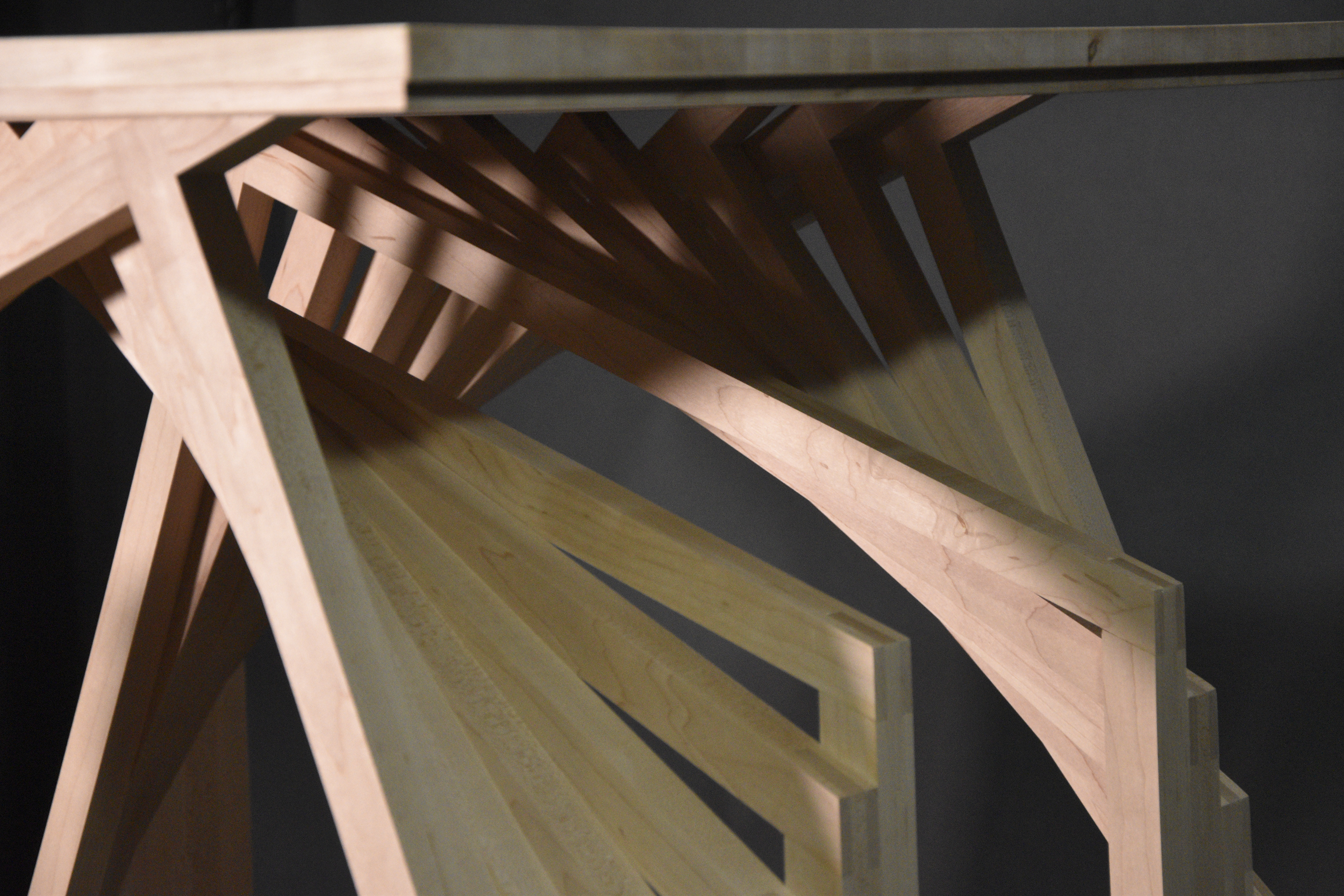
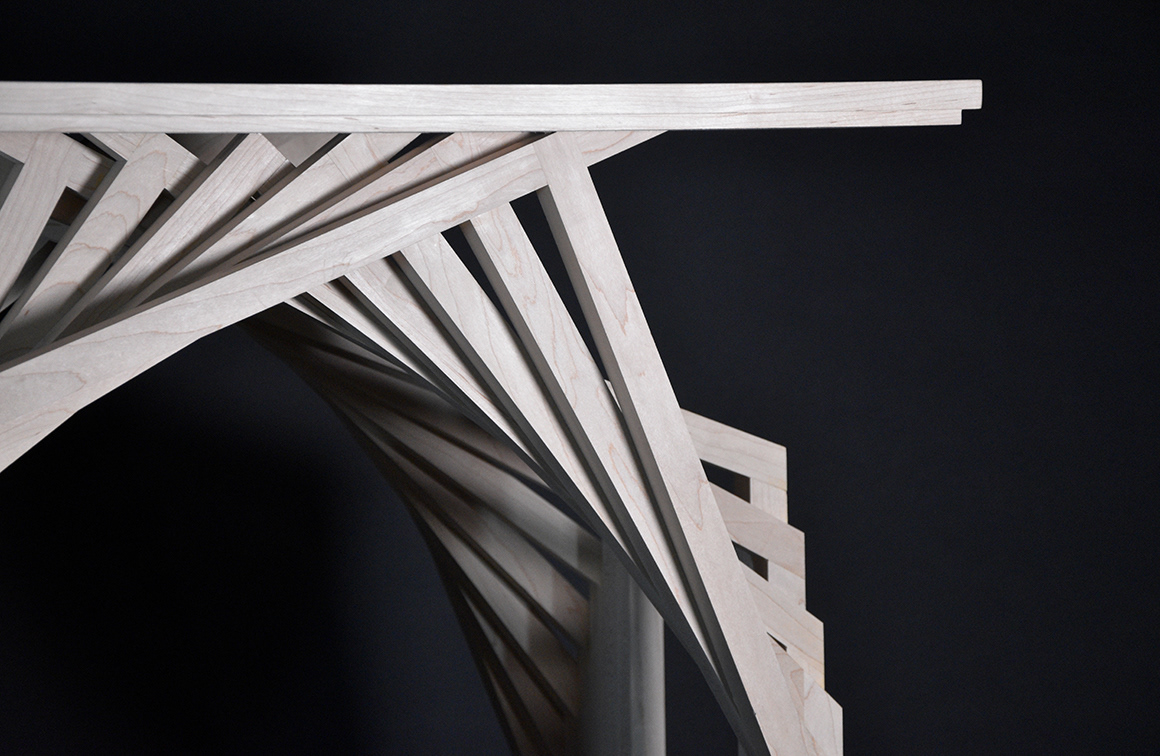
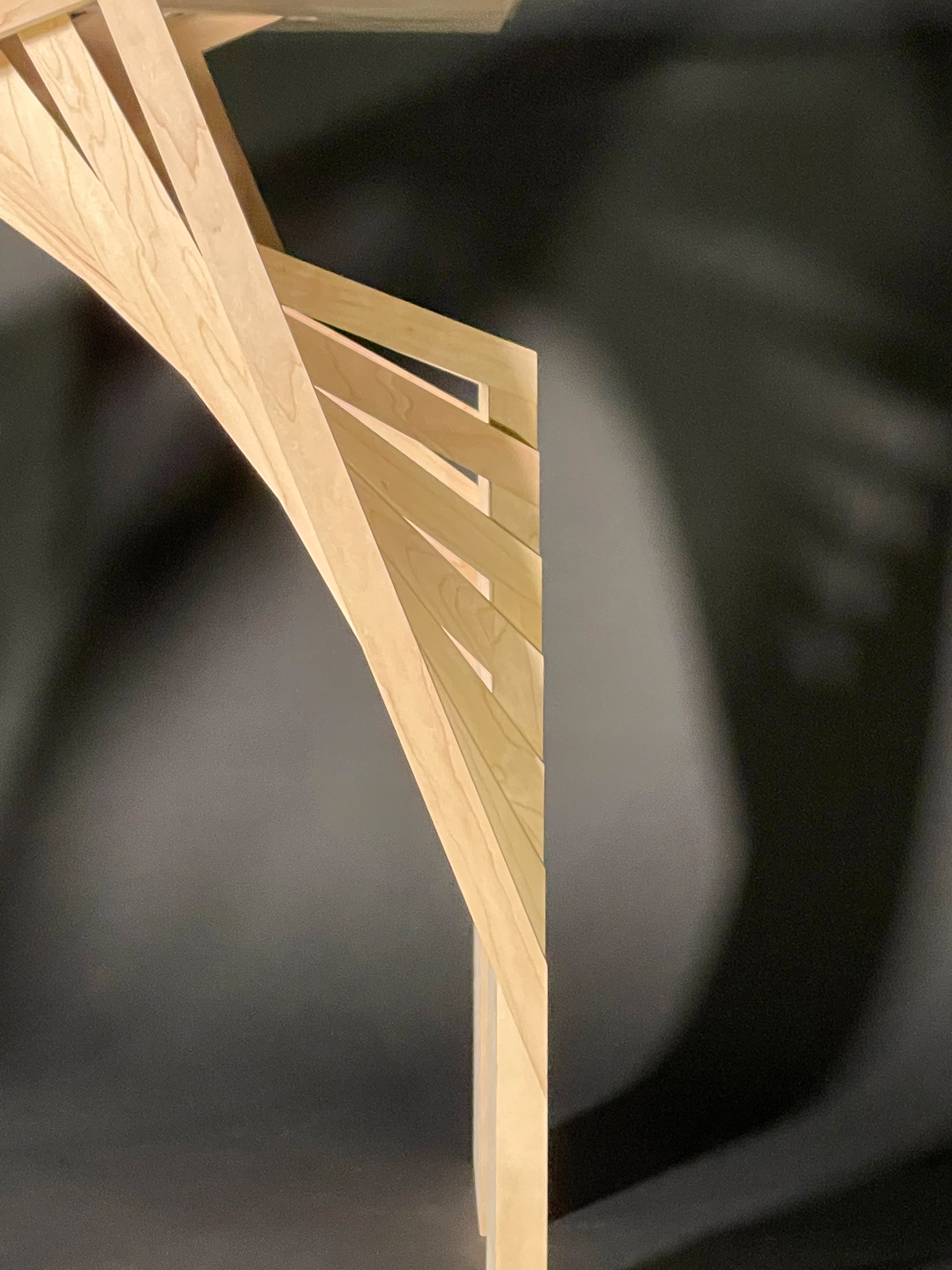
The design originated from a perfect cube which is ultimately reduced to create the almost robotic or spider like legs of the table. In a choice to keep a consistency between the legs of the table and the table top, the entire table employs the 1” x 1” module of wooden pieces. As a result, the table top itself appears almost as a butcher block with its 29 individual pieces. Composed of 109 pieces of wood in total, the table proved to be a test in preliminary planning and utilizing the geometry of the design to aid in the assembly process.
While the intentions of the initial design relied on bridal joints for every connection for the legs. The top joint for every leg is a bridal joint that meets at 90 degrees. However, it proved too difficult to execute accurately on such specific angles for the outside joints. As a result, the illusion of bridal joints are created with a floating tenon connection for all of the legs except the center two which use an actual bridal joint due to their 45 degree connections. The final detail of note is the reveal cut into the bottom edge of the table top. This reveal references the thirds of the bridal joint used in the legs by reducing the edge of the table to only 2/3 of an inch.
